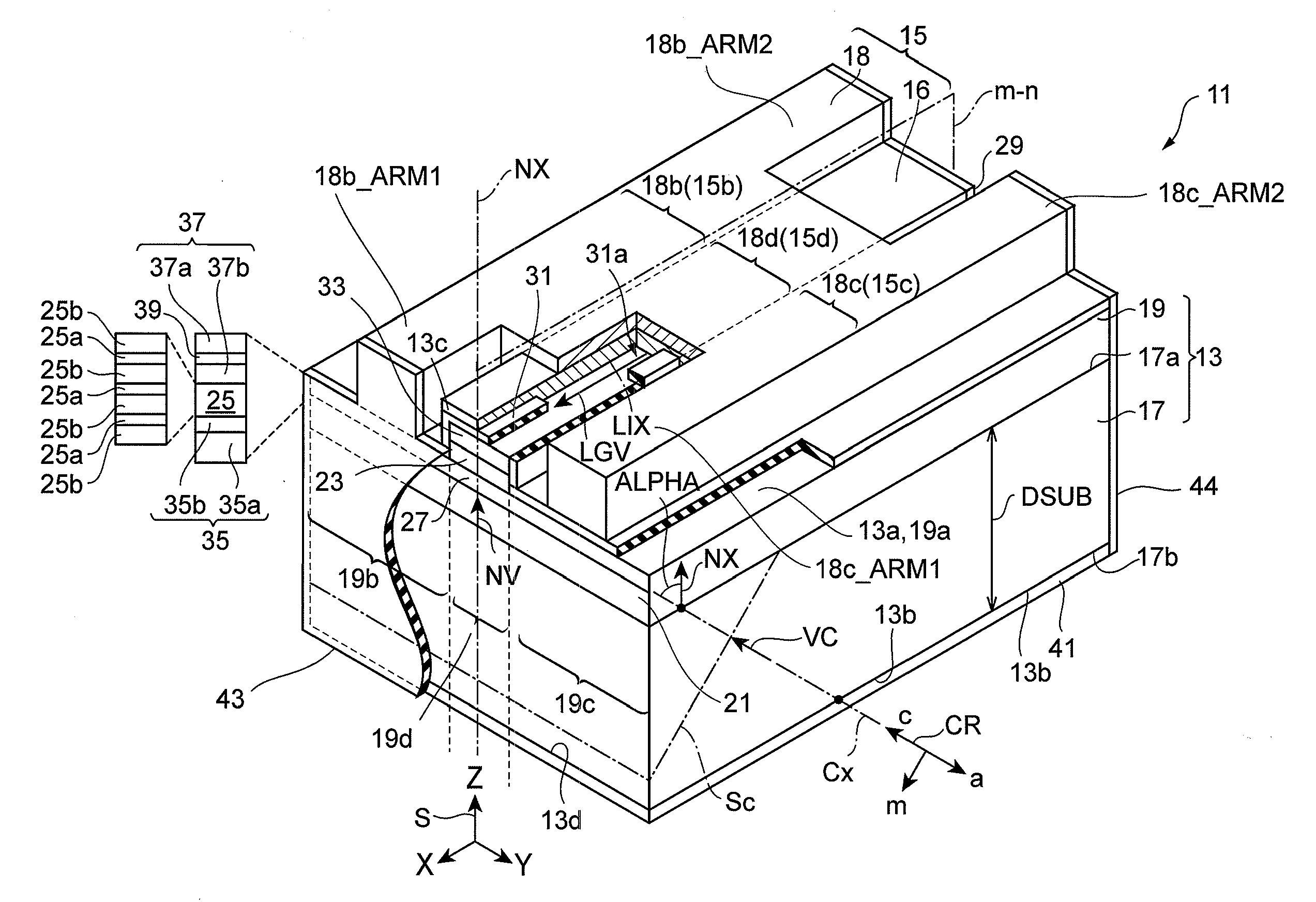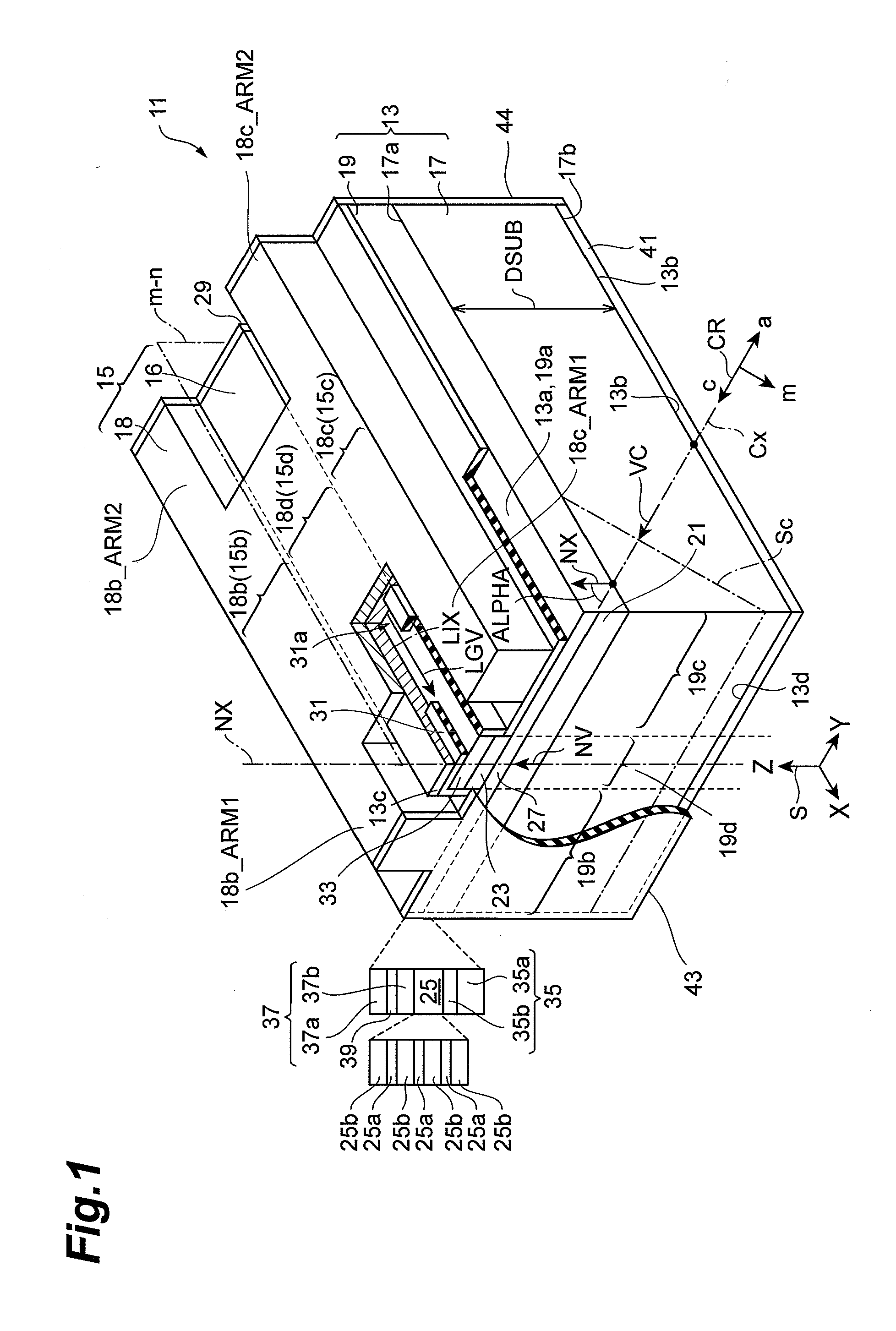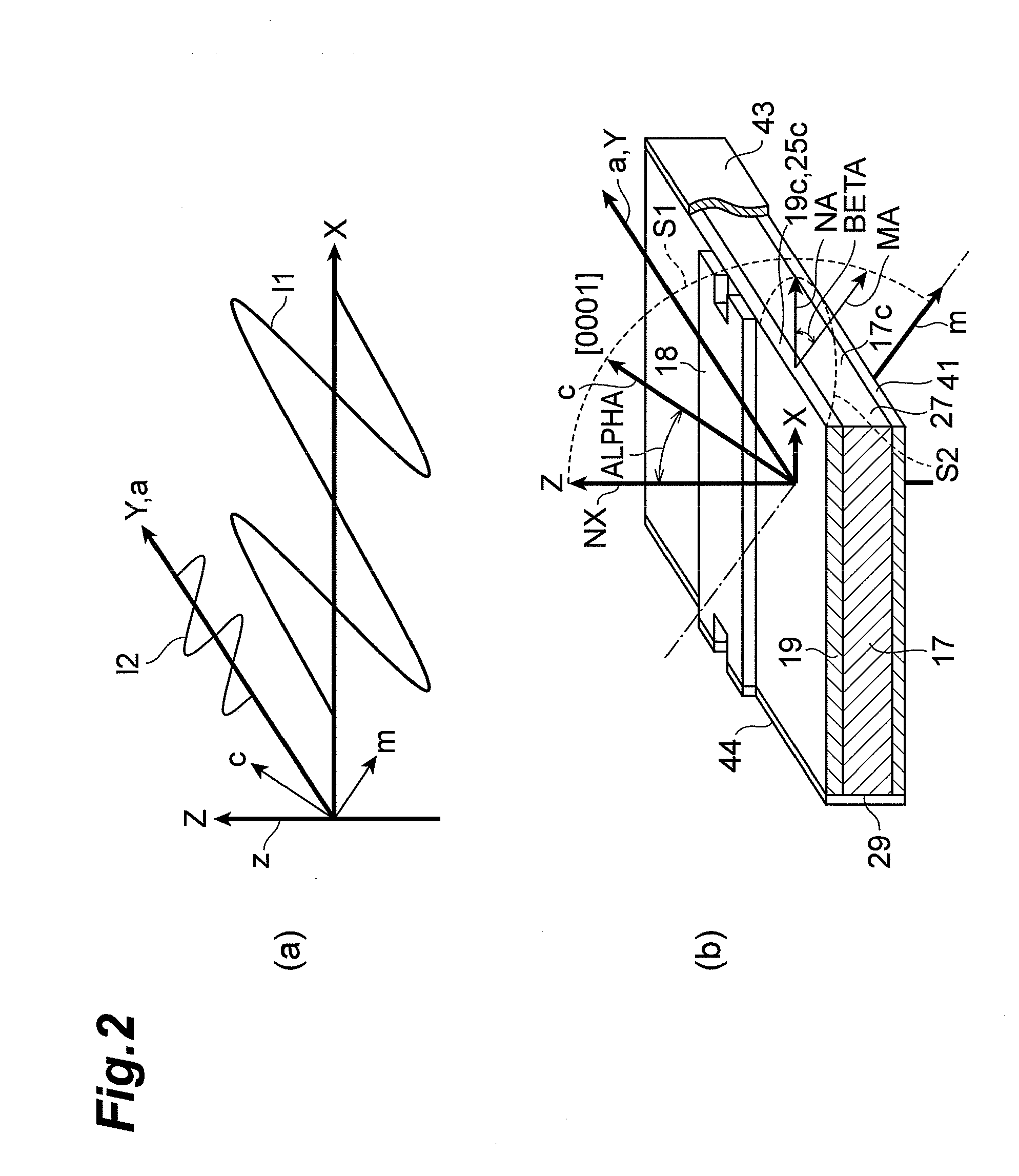Group iii nitride semiconductor light emitting device
- Summary
- Abstract
- Description
- Claims
- Application Information
AI Technical Summary
Benefits of technology
Problems solved by technology
Method used
Image
Examples
example 1
[0097]A GaN substrate having a semi-polar surface is prepared and the perpendicularity nature of the fractured face is observed, as described below. A (20-21)-plane GaN substrate is used that is cut out from a thick (0001) GaN ingot grown by HVPE at an angle of 75 degrees toward the m-axis direction away therefrom. The primary surface of the GaN substrate is mirror finished, and the back surface is polished into a pearskin finish. A scribed line is formed on the pearskin back side with a diamond pen in a direction orthogonal to the c-axis projected onto the primary surface of the substrate, and then the substrate is fractured by pressing. The substrate is observed from the direction of the a-plane with a scanning electronic microscope in order to estimate the perpendicularity of the fractured face that has been formed, and this observation has shown that the fractured face has flatness and perpendicularity with respect to the semi-polar primary surface.
example 2
[0098]Example 1 has shown that, in the GaN substrate having a semi-polar (20-21) plane, the fractured surface obtained by pressing after forming a scribe line orthogonal to the projected c-axis on the primary surface of the substrate has flatness and perpendicularity relative to the primary surface of the substrate. In order to show the usefulness of the fractured face as a laser cavity, a laser diode which is illustrated in FIG. 7 is grown by metal organic chemical vapor deposition. The raw materials used include trimethyl gallium (TMGa), trimethyl aluminum (TMAl), trimethyl indium (TMIn), ammonium (NH3), and silane (SiH4). A substrate 71 is prepared. The substrate 71 is cut out with a wafer slicing apparatus from a thick (0001) GaN ingot grown by HVPE at an angle in the range of zero to 90 degrees formed toward the m-axis direction, so that the GaN substrate that has an inclination angle ALPHA of the c-axis formed toward the m-axis at a desired off-angle in the range of zero to 90...
example 3
[0109]An epitaxial substrate is fabricated by the procedure described in Example 2, and then, a p-side electrode and an n-side electrode are formed thereon. Two different structures (A) and (B) are prepared for the p-side electrode. Similar to the structure described in the embodiment, structure (A) includes a pad electrode having two arms (hereinafter referred to as “notched structure”). Structure (B) includes a pad electrode the entire edges of which extend along end faces of a cavity (hereinafter referred to as “notchless structure”). Dielectric multilayers of Al2O3 / TiO2 are grown on the end faces of the pad electrodes in structures (A) and (B). The reflectance of one end face is 90%, and the reflectance of the other end face is 80%. Part (a) of FIG. 9 illustrates a scanning electronic microscope image of a dielectric multilayer grown over a fractured face of a pad electrode in structure (A). Part (b) of FIG. 9 illustrates a scanning electronic microscope image of a dielectric mu...
PUM
 Login to View More
Login to View More Abstract
Description
Claims
Application Information
 Login to View More
Login to View More - R&D
- Intellectual Property
- Life Sciences
- Materials
- Tech Scout
- Unparalleled Data Quality
- Higher Quality Content
- 60% Fewer Hallucinations
Browse by: Latest US Patents, China's latest patents, Technical Efficacy Thesaurus, Application Domain, Technology Topic, Popular Technical Reports.
© 2025 PatSnap. All rights reserved.Legal|Privacy policy|Modern Slavery Act Transparency Statement|Sitemap|About US| Contact US: help@patsnap.com



